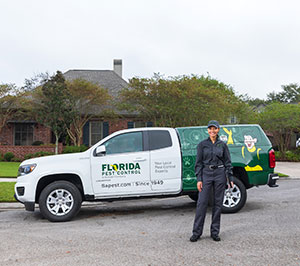A1 Charlotte Pest Control Companies - Your Regional Pest Experts
A1 Charlotte Pest Control Companies - Your Regional Pest Experts
Blog Article
Bed Insect Therapy Malfunction: Comparing Chemical Vs. Non-Chemical Solutions
In the world of insect control, specifically when managing the persistent problem of bed pests, the choice in between chemical and non-chemical treatment options can be a critical one. Both strategies supply distinctive benefits and downsides, affecting aspects such as performance, safety factors to consider, and total expense. By checking out the nuanced information of each technique, a clearer understanding of which course to seek in dealing with a bed pest invasion can be obtained.
Effectiveness of Chemical Treatments
Chemical treatments for bed pest problems have been extensively acknowledged for their powerful and rapid efficacy in eliminating these bugs. When thinking about the efficiency of chemical treatments, it is essential to understand that they can give a complete and fast option to a bed insect problem.
Furthermore, chemical treatments have the advantage of using recurring impacts, indicating that they can remain to get rid of bed bugs even after the preliminary application. This residual action is particularly beneficial in combating any type of potential re-infestations. In addition, the quick activity of chemical treatments can bring relief to people encountering serious bed insect invasions, permitting them to gain back control of their space promptly.
Safety Interest In Chemical Solutions
When utilizing chemical options for bed pest treatment is making certain the safety of residents and the setting,One essential facet that needs cautious consideration. While chemical therapies can be efficient in getting rid of bed insects, they might pose dangers otherwise dealt with effectively. One of the key security interest in chemical solutions is the prospective injury they can cause to human health and wellness. Direct exposure to particular chemicals used in bed insect therapies can bring about breathing issues, skin irritability, or various other unfavorable responses, especially in people with pre-existing problems or sensitivities. Additionally, improper application or dose of chemical pesticides can result in toxic deposits sticking around in the cured area, positioning long-lasting health and wellness threats to occupants.
Furthermore, the environmental impact of chemical options is another substantial factor to consider. Some chemicals utilized in bed bug therapies might be dangerous to valuable pests, wild animals, and environments if they leach right into the soil or water supply. It is necessary to make use of chemical therapies carefully, complying with safety guidelines, and taking into consideration much less hazardous alternatives to mitigate these dangers and make sure the efficient and secure administration of bed insect infestations.
Benefits of Non-Chemical Strategies
Thinking about the possible safety and security problems and ecological effect connected with chemical services for bed bug treatment, exploring non-chemical approaches offers an encouraging choice with several unique advantages. Non-chemical treatments are eco friendly, as they do not contribute to air or water air pollution, making them a lasting choice for pest control.
In addition, non-chemical options can be reliable in targeting bed insects, including hard-to-reach areas where chemical therapies might not pass through. Methods such as heat treatment, vacuuming, heavy steam cleaning, and bed mattress coverings supply thorough removal without the use of dangerous chemicals. In addition, non-chemical strategies can be much less turbulent, needing minimal prep work and enabling for quicker reentry into dealt with areas. Generally, opting for non-chemical bed insect treatment approaches not just prioritizes safety and environmental management but additionally makes certain effective and detailed insect control.
Limitations of Non-Chemical Treatments

In addition, non-chemical treatments usually call for several applications to accomplish effective obliteration. This can be time-consuming and view publisher site might not constantly guarantee total elimination of all bed bugs and their eggs, especially in hidden or hard-to-reach places.
Additionally, the success of non-chemical treatments heavily relies upon proper implementation and thoroughness, which can be testing for individuals without professional competence. Poor application of non-chemical techniques might lead to incomplete obliteration, resulting in relentless infestations and the need for extra therapies.
Consequently, while non-chemical treatments have their advantages, it is important termite to acknowledge these limitations and consider them when determining one of the most reliable strategy for taking care of bed pest problems.
Cost Contrast: Chemical Vs. Non-Chemical Options
Given the constraints connected with non-chemical therapies, a necessary element to evaluate in the context of bed bug monitoring is the expense comparison in between chemical and non-chemical choices. In comparison, non-chemical therapies like warmth treatment or steam can be extra expensive, with costs ranging from $1,000 to $6,000 for an entire home. While the preliminary expense of chemical treatments might seem reduced, numerous therapies might be required to completely get rid of the infestation, potentially enhancing the total price.
Conclusion

Considering the possible safety issues and environmental impact linked with chemical remedies for bed bug treatment, discovering non-chemical techniques presents an appealing option with numerous unique advantages.Provided the constraints associated with non-chemical treatments, a necessary aspect to assess in the context of bed pest administration is the price contrast between chemical and non-chemical alternatives. In comparison, non-chemical therapies like heat therapy or steam can be more costly, with expenses ranging from $1,000 to $6,000 for an entire home. While the click for info preliminary cost of chemical treatments may seem reduced, numerous treatments may be required to fully eradicate the infestation, potentially raising the total cost.In final thought, when comparing chemical and non-chemical bed bug treatment alternatives, it is essential to take into consideration efficiency, security, benefits, restrictions, and expense.
Report this page